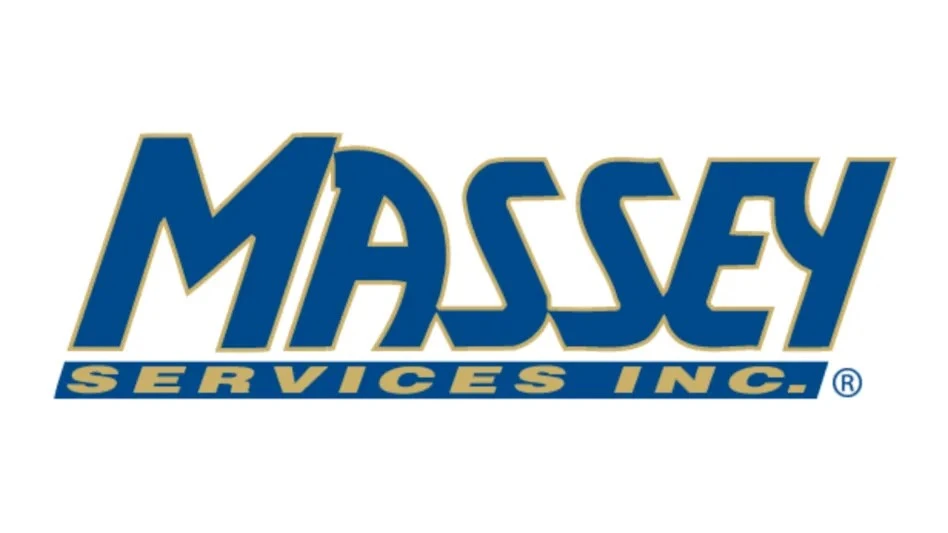|
ABOUT THIS YEAR’S LIST
This list was compiled by PCT Editor Jodi Dorsch. The accompanying stories were written by Jodi Dorsch, PCT Managing Editor Brad Harbison and PCT Contributor Lisa McKenna. Certain companies are absent because they elected not to disclose their 2004 revenues or PCT was unable to discern revenues through other means.
A few notes about this list: There are 31 states represented in this list. The top three states represented in the Top 100 are California (14 companies), Florida (12 companies) and Georgia (eight companies). Companies in the PCT Top 100 earned a total of $3,733,820,588 in 2004, which is an increase of almost $210 million from 2003. While several companies on this list offer product distribution services, those revenues are not included here. PCT’s Top 100 list reflects service revenues only. PCT made every effort to identify and contact companies that should be included in the list. If your company should (or if you know of a company that should be) listed, contact Jodi Dorsch at jdorsch@giemedia.com. |
With pest control companies posting block-buster growth numbers, it appears there’s never been a better time to be in the professional pest control industry. And as you might guess, the market owes its strong growth potential to a number of converging market factors of which you may or may not be taking advantage.
One thing’s for sure: the companies on this year’s Top 100 list are winning business based on current market trends. And in many ways, this year’s list mirrors our industry’s recent successes. Here you’ll see many familiar names, of course, but also several newcomers. And almost half of the companies on this list said they experienced double digit growth rates in 2004. That’s up from about 40 percent in last year’s Top 100.
A number of market factors are likely at work explaining pest control companies’ strong performance in 2004. These factors also indicate the forecast for the professional pest control industry remains strong. That’s the belief held by Cindy Mannes, executive director of the Professional Pest Management Alliance (PPMA). As leader of the organization dedicated to consumer awareness of the industry, Mannes has studied the various factors at work leading to a healthy pest control market.
For one, she says, PPMA efforts have in fact grown the professional pest control market by at least a few percentage points. "We do know the proactive stance of the PPMA has helped to drive business to the professional arena," Mannes said.
There are other factors at work as well, she said. Currently, Mannes explained, we’re experiencing an "intersection" of several demographic forces, all of which began decades ago and that bode well for the industry.
Steve Good, vice president and chief marketing officer of Terminix International, also credits several market factors for industry growth. "It’s kind of a collection of issues that has helped increase the momentum of growth in the industry," said Good.
|
|
One integral component, says Mannes, is the longevity factor. Today’s consumers are living longer, therefore they are in need of more services. What was once a youth society is now giving way to a more mature world, Mannes explained. "We are becoming a society driven by the needs of those over 50." And this older society, which has more disposable income, places a higher value on professional pest control services, as opposed to do-it-yourself pest control.
Another major demographic driver, Mannes noted, is the country’s significant population of 78 million Baby Boomers who are nearing retirement age and have the disposable income to spend on services such as professional pest control.
In Good’s opinion, the two biggest components for growth in the industry could be last year’s healthy economy and our society’s population of Baby Boomers choosing to do a lot more outsourcing of services. "Their disposable income is growing," Good explained, "and they’re at a stage in their lives where they can afford and desire the luxury of not having to do everything for themselves."
Gary Rowell, division vice president for Orkin’s Pacific Division, holds a similar view. "There’s more of a trend toward outsourcing, especially any service-related things for the home, and I think that’s being driven by increased disposable income and decreased disposable time," Rowell explained. "There’s just less time available, and for someone to spend that time doing their own pest control work I think is less enticing to them."
Another factor contributing to the industry’s growth, said Good, is the large number of dual-income families in search of more leisure time. "They’re willing to engage service providers to do things they might have been doing themselves."
Of course the country’s strong housing market of the last few years cannot be overlooked as another factor that’s benefitted the industry. Historically low interest rates have helped fuel consumer’s demand for new homes, second homes, and/or the ability to remodel existing homes, all of which have worked in PCOs’ favor.
Mannes pointed to research indicating that more and more people, of various income levels, are purchasing second homes. And she noted, today’s higher divorce rate, at around 50 percent according to the U.S. Census Bureau, has also led to an increase in the number of households, along with an increase in single-parent households who are increasingly strapped for time.
Attitudinal changes among consumers in recent years have also translated to more work for the industry, Good says. "People have attitudinally been recognizing the issues we deal with as pest management professionals," said Good. Namely, he explained, consumers increasingly see the value PCOs provide in terms of protecting public health. A few cases in point: West Nile virus, Lyme disease, bed bugs and cockroach allergens. "We would say that consumers are a lot more concerned and aware."
Rowell also sees evidence that consumers are more aware of protecting their health, especially concerning vector-borne diseases. "From a do-it-yourself perspective," Rowell commented, "homeowners are a lot less likely to take on that responsibility."
Greg Baumann, technical director of the National Pest Management Association, says he also has seen a change in consumer attitudes concerning professional pest management. "I think that largely through the efforts of PPMA and other industry efforts, the consumer finally connects the value that is available from our members," he said. "We as an industry are getting very good at explaining the value to the customer," Baumann added. "We understand the importance of public health, we understand the importance of nuisance pests. We are offering these services to the homeowner and we know how to explain to the consumer the value of what we do."
Furthermore, Baumann said he believes today’s consumers have little or no tolerance for pests, especially because of public health concerns. "Consumers have a zero tolerance of anything that’s going to negatively affect their lives," he said. Termite control is another area that continues to show up on consumers’ radar screens. Baumann says with consumers spending more money on their homes, and spending more time at home, they don’t want pests preventing them from enjoying their homes or yards.
|
Who’s doing the buying? |
|
For a list of some of the more significant sales and acquisitions during the calendar year 2004 CLICK HERE. |
With more people finding home ownership to be affordable, the pest control industry benefits in a number of areas, Baumann pointed out. Besides leading to increased insect inspections, it also leads to more regular pest control customers.
And with increases in the home remodeling market in 2004, as reported by the National Association of Homebuilders, more consumers were uncovering hidden pest problems needing to be dealt with. And they frequently don’t want to do it themselves, Baumann added.
With all of these consumer and economic conditions converging in 2004, what can pest control companies expect in 2005? While rising interest rates are expected to quell the housing market, and even though business costs in many areas (like fuel, insurance, health care) continue to increase, pest management professionals should be optimistic. A host of other factors remain at work that are putting PCOs into an enviable situation: A society of customers ready and willing to seek out professionals, and an organization of smarter, more adaptable and aware PCOs. — L.M.
----------------------------------------------------------
Orkin's Western, 1 Year Later
Last year, Orkin Pest Control made headlines when its parent corporation, Rollins Inc., purchased the family-owned and operated Western Pest Services, based in Parsippany, N.J.
It was the largest acquisition ever for Orkin, already the nation’s second largest company. And Western, holding the No. 8 spot among the nation’s largest firms, was held in high esteem throughout the industry for its tradition of quality service and customer satisfaction. The company was founded by J.E. Sameth in 1928, and had been run by second-generation siblings Bob Sameth, Dick Sameth and Jeanne Burke.
"There’s a lot of pride to be affiliated with the Western team," said Orkin president and COO Glen Rollins. "They have a reputation that’s second to none."
Western and its affiliates were purchased for close to $110 million in cash, and included Western Pest Services, Western Fumigation and Residex Corp., its distribution arm. Residex was soonafter sold to Chris Donaghy and other investors, some of them members of the Speckoz group of companies.
While talk of the acquisition led to much speculation about how the Western operation would be integrated into the Orkin organization, few could have predicted just how smoothly the purchase has gone. The two organizations have seemingly complemented each other well. The Western operation, with its strong market presence in the Mid-Atlantic region, was viewed as a nice fit for Orkin, which had fewer offices there. And since both companies originated as family-owned and -managed operations, they shared similar cultures and values.
The two organizations are continuing to learn from each other about how to do business. "Orkin admires the long history of excellent employee retention that Western has enjoyed and they see this as an opportunity for them to grow and learn from us," said Tom Walters, division vice president and general manager for Western. (Western is a wholly owned subsidiary of Rollins Inc., operating as a separate division of Orkin.) Walters, formerly Western’s general manager, also oversees the Orkin branches that operate in Western’s territory. Meanwhile, he added, "in the area of marketing and advertising, Orkin is one of the best."
Today, little has changed at Western, other than being owned by Orkin. Technicians still wear the same Western uniforms, and the company’s trucks, with their bright teal and red Western logos, still traverse the same streets. In many cases customers still deal with the same technicians they always have. For now the company has decided to continue to operate Western as a separate entity in most of its service areas. "Typically the companies we are interested in are very successful in the area they’re in," Rollins said. "The last thing we want to do is hinder what makes them so successful." Western still has its own offices, its own employees, its own phones numbers and its own Web site. In the last year, no offices for either Western or Orkin have been closed, and no field jobs have been eliminated.
This decision to maintain the two brands has proven to be a smart one. Western’s business is ahead of its sales targets, has maintained its low level of turnover and is performing well. "There have been obvious benefits to linking the two teams," Rollins said.
The two brands are marketed to two distinct groups of customers, and Orkin and Western are determined not to step on each other’s toes. What’s more, this arrangement could last for some time, Walters said. "Western has a very strong presence in the Mid-Atlantic states," Walters said. "As long as that continues, it is a strong possibility that the Western brand will continue to operate as a separate entity from Orkin."
One of the few changes for Western was its shifting of close to $5 million of Copesan business back to the Copesan organization, an alliance of pest control companies providing pest control services to businesses throughout North America. Orkin is not part of that alliance. However, even with this loss of business, Western has still outperformed its goals. "We finished last year very strong," said Walters, "better than what we had planned."
The main challenge throughout the acquisition, says Rollins, was winning the trust of Western’s 700 employees through the change process. To help ease the transition, he and Walters traveled to all Western offices to answer questions and deal with concerns.
And it appears employees of both companies have weathered the acquisition well. Upon learning about the acquisition, Bob Johnson, an entomologist with Western for 24 years, was shocked and even dismayed, he says. But those feelings quickly gave way to confidence and trust in the Orkin organization. "Frankly I’m very comfortable with the acquisition," he said. "You do see changes, but they are for the better." For one thing, he says, the company is internally more efficient than it used to be.
Furthermore, he sees similar admirable qualities in Glen Rollins and in J.E. Sameth, the founder of Western and one of Johnson’s most respected peers. "I believe in Glen Rollins," Johnson said. "When he tells you he’s going to do something, he does it."
Those are sentiments happily echoed by Bob Sameth, former president of Western who had stayed on with Orkin for the past year. "I must say that they’ve lived up to everything they’ve committed they would do," he said. — L.M.
----------------------------------------------------------
A Liberating Year for Residex
Its been just over a year since Chris Donaghy, then general manager of Residex, along with a group of investors, some of whom are members of the organization Speckoz, purchased the Residex business from Rollins Inc.
The highly regarded East Coast distributor had been owned by Western Pest Services and was initially part of that company’s acquisition by Rollins. However Donaghy quickly negotiated the purchase of Residex, along with the financial backing of some members of Speckoz Inc., a marketing and distribution organization serving PCOs. In the process, Residex effectively ended its role as in-house distributor of one of the largest pest control companies in the industry. It also opened the door for the company to gain new customers, particularly those who might have been unwilling to purchase products from a competitor.
Completing its first year in business as an independent organization has redefined the character and culture of the company, says Donaghy, now president of Residex. "One of our goals through this entire process was to minimize the transitional pains that our customers, vendors and employees would feel and we can proudly say: Mission accomplished."
Already a much admired organization, Residex has strengthened its position in the marketplace. "We are pleased to say that the company has seen steady sales growth for our first eight months as Residex LLC," said Jim Hespe, general manager. In addition, the company in the last year added three new locations in Florida, and in January 2005, moved into a larger corporate headquarters in Cranford, N.J. The new location, just a few miles from its old headquarters in Clark, N.J., has more space throughout to help accommodate growth, says Hespe.
"The opportunity is that there are many PMPs who will now do business with us that wouldn’t prior to last year’s sale when we were owned by their direct competitor, Western Pest Services," said Hespe, "even though Western shared their growth strategies with our customers through our value-added services."
Donaghy credits the company’s employees and customers with keeping the business strong through its vulnerable transitional period. "Our employees are excited because they are on the ground floor of a new business with a distinctive reputation for great service," he said, "and as a team they are reaching new heights in their careers." He is equally upbeat about the company’s future prospects. "The new Residex will offer even greater opportunity to all who support us," he said. — L.M.
----------------------------------------------------------
HUGE GROWTH: Dedicated Quality Control & Assurance Team Sets Northwest Apart
In the competitive market of the Southeast U.S., Northwest Exterminating (#28), Smyrna, Ga., has managed to set itself apart from other companies by dedicating employees specifically to quality control and assurance. "Dedication to customer service continues to drive our success," said Steve Phillips, Northwest Exterminating president. "We are able to provide the highest levels of customer care in our market."
To that end, the company was recently awarded a Consumer Choice award for its efforts — the third year they’ve received this recognition. "Additionally, in March, we implemented an employee incentive bonus program that is helping further drive quality, service and efficiency," Phillips added.
Phillips credits the company’s 23 percent growth in 2004 to a good internal team. But Northwest is not content to rest on its laurels. "We continue to add knowledgeable employees with specific expertise that complement our existing products and services," he said.
While the company anticipates an estimated 15 percent growth rate this year, there are some hurdles ahead. "We want to be positive and think the Atlanta market will continue to be strong, but we are very concerned with increases in fuel cost and the longer term affect it may have on the economy," Phillips said.
The company’s growth has come "internally from growing individual customers, not from acquisitions."
"We continue to have great success generating ‘customers for life,’" Phillips said. — J.D.
----------------------------------------------------------
Ehrlich Reaches Milestone #4 Ehrlich Tops $100 Million Mark
In 2004, J.C. Ehrlich Co. (#4), Wyomissing, Pa., reached an impressive milestone in the pest control industry — the company earned more than $100 million in service revenues.
The feat only has been achieved once before — by Chuck Steinmetz, former owner of All-America Termite and Pest Control and current owner of Middleton Pest Control (#19), Orlando, Fla. Together, the two firms had revenues of more than $104 million, Steinmetz told PCT.
The 77-year old family-owned J.C. Ehrlich Co.’s 2004 revenues were $100.6 million within its pest, termite, bird, bioremediation and vegetation management lines of business.
"Our objectives have always been to just have each of our offices reach their annual goals. We never make a big deal out of our company-wide revenue goal. I must admit, though, that it is quite a thrill to have reached this milestone — $100 million," said Victor Hammel, Ehrlich president.
"In the last year or two Vic and I casually spoke about the reality that we might actually hit $100 million, but it was not a major focus. In 2004 we picked up additional Copesan business as a result of the Western sale to Orkin," said Co-Owner Bobby Hammel. "That was just enough to cause us to exceed the $100 million mark."
The firm operates 42 company-owned offices in New York, New Jersey, Pennsylvania, Virginia, Delaware, Maryland and Ohio and was founded in 1928. — J.D.
----------------------------------------------------------
NEW TO THE LIST: Myers Pest & Termite Services Grows 31%
It goes to show you what a well-thought out plan can do. Myers Pest & Termite Services (#77), Euless, Texas, increased its revenues by 31 percent in 2004. While many companies didn’t even grow double digits, Myers grew by almost one-third.
"The Dallas-Ft. Worth market was anything but great, but our results from last year were the results of our five-year business plan," said Rick Rogers, vice president of operations. "We didn’t believe the growth was extraordinary in that the year went exactly as budgeted. Had it have gone different would have been the surprise."
Myers Pest & Termite Services has done several things right to ensure its success, even though last year’s termite swarm was "mediocre." "Unfortunately there is no ‘magic dust’ to spread around that spurs that type of growth. It’s the culmination of lots of people and marketing plans going right. We’ve been teaching our employees for three years how to promote our company. The power of 65 is far greater than the influence of a few," Rogers said.
The company also implemented a TV advertising campaign in addition to the firm’s traditional marketing. Rogers said he thinks 2005 will be more challenging than 2004 but the company is again anticipating similar growth for the next three years.
"New home construction is carrying the growth. For the first time in many years we are seeing modest commercial growth. There are still way too many vacant office buildings to say growth is good."
Rogers added that the company’s employees and its business plan are the reasons for its success. "The reason we succeeded is that we stayed with the plan and only deviated as the market dictated. Sometimes as businessmen we have a tendency to overreact before we give the plan a chance to work. If you’ve done your market research you will know what works and what doesn’t," he said. — J.D
----------------------------------------------------------
Superior Pest Management Jumps Nine Spots
By focusing on limited service area, Superior Pest Management (#52), Ashburn, Va., jumped nine spots on PCT’s Top 100 list. In fact, last year’s 22 percent growth was the lowest percent increase since the company was founded in 1995.
"We’ve seen percentage increases of 89 percent, 52 percent, 29 percent, 77 percent and 44 percent the previous five years without any acquisitions," said Mark Tatum, Superior Pest Management vice president.
The company has a unique business model in an area of the country that is booming. "We think (this model) will work in any market," Tatum said. "We are currently only in the D.C. Metro area. Presently, it seems our growth is only limited by the ability to find quality employees in addition to the outstanding ones we already have.
"We are fortunate to have a business model that makes growth achievable," he said. "We are constantly trying to improve our operations, marketing and overall business plan to adapt to the changing market conditions." Tatum attributes the company’s growth to powerful and unique marketing programs and a core of great employees. The firm has low employee turnover, which makes managing growth much easier. "We don’t subscribe to the generic pest control philosophy of spending a fortune on Yellow Page ads and waiting for the phone to ring," he said. — J.D.

Explore the May 2005 Issue
Check out more from this issue and find your next story to read.
Latest from Pest Control Technology
- CAPMA Hosts 2025 Legislative Day in Sacramento
- Grizz Pest Management Bartends for a Cause
- Rose Pest Solutions Becomes Official Pest Provider of Chicago Fire FC
- WSPMA Hosts Legislative Day at Washington State Capitol
- A-1 Pest Control Marks 59 years in Business
- Hawaii PCO Shares Regulatory Challenges, Business Impacts from Lahaina Wildfires
- 5 Tips for Reducing Waste in the Office and in the Field
- OvoControl Now Available in Chile







